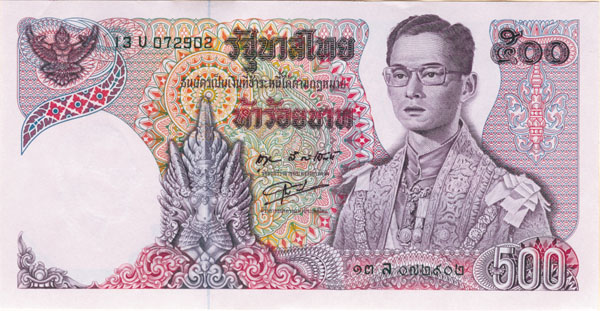Thailand - P-86 - Foreign Paper Money Note
Inv# FM1376 Foreign Paper Money Cat# P-86
500 Baht, (1975-88), P-86. The baht serves as the official currency of Thailand and is subdivided into 100 satang. The Bank of Thailand is tasked with the issuance of this currency. As reported by Bloomberg, the Thai baht was recognized as the best performing currency globally in 2018. Additionally, as of January 2019, SWIFT ranked the Thai baht as the 10th most commonly used currency for international payments. Similar to the pound, the baht has its origins in a traditional unit of mass. Its value was initially determined based on the weight of silver, specifically defined as 15 grams, and it is believed to have been in circulation since the Sukhothai period, taking the form of bullet coins known in Thai as phot duang. These coins were crafted from solid silver and cast in various weights that adhered to a traditional system of units based on simple fractions and multiples, one of which is the baht.










Ebay ID: labarre_galleries